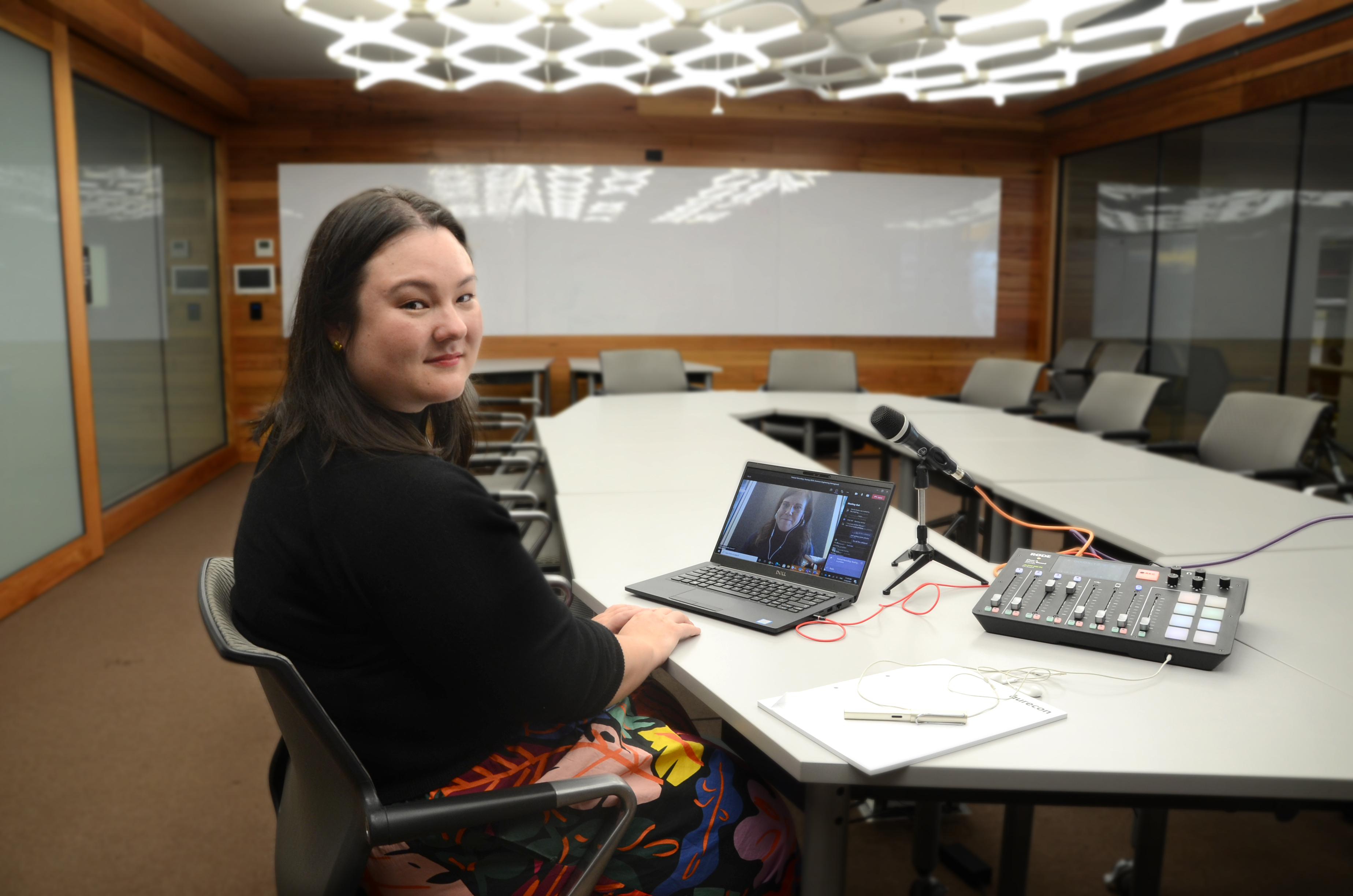Swinburne alum predicting the future

In summary
- Swinburne Strategic Foresight alum, Noriko Wynn, has developed a Futures Playbook at engineering consultancy company, Aurecon
- Ms Wynn hopes the playbook will contribute to the way we think about the future and how we may better adapt to emerging technologies and innovations
What will our future look like? What role does technology play? How can we adapt and make positive change? These are just some of the questions posed by Noriko Wynn, Swinburne alum and Futurist at global engineering consultancy company, Aurecon.
‘As a futurist at Aurecon, my job can get a little nuts,’ Ms Wynn says.
‘Ever since I was little, I was fixated on the long-term and wanting to understand the different approaches to tackle a problem. Today, I am the Futures Research and Strategic Foresight lead and my role is all about how we can help our clients anticipate what the future may look like and how we can plan infrastructure in response to what we might need to change, address, or evolve.’
Ms Wynn completed the Master of Strategic Foresight at Swinburne University of Technology and is now one of only a few futurists embedded in an Australian corporation, applying her knowledge in innovative ways for the complex world.
‘What I found with strategic foresight is you need to be multidisciplinary – to do it well, you need to understand different types of systems. Exploring the interactions in different economic systems, social systems, political systems, and technology systems is important to be able to anticipate change – particularly against very long timelines,’ Ms Wynn says.

Futures Playbook for industry
In her specialised role at Aurecon, Ms Wynn has developed the Futures Playbook to help industries and communities question what the future could look like, what might need to change, and how society can better adapt to what the future might bring.
‘The playbook was designed very much around the principles and methodologies I learnt at Swinburne and applying them at Aurecon. What the playbook is designed to do is to put structure around how we think about the future, help groups come together to build a collective perspective and think about what the future could look like for their project or for the community that they're working with,’ Ms Wynn says.
‘To think about the future is a human trait. It's one of the things that many say defines Homo sapiens – we can think about the future. I think one of the things that the pandemic has really shown is that we now need different tools and decision-making processes in the context of uncertainty. Strategic foresight gives you a set of those tools – this is how we can understand what changes are coming, how it might change, and what we might need to do differently.’
A tech-rich future
With technology progressing at such a rapid rate, Ms Wynn says we must adopt and adapt as best as we can for the future.
‘Some people are really excited for the future and others are scared. Technology is a great example of this, but what is interesting is that we adopt technologies and then we actually shape them for our own benefit, like we have with social media.’
‘One of the things that I look at in my role is how our technologies are shaping and moving across industries. Like digital twins – they started in manufacturing, in a different engineering context, but now they are translating into the built environment, which is fascinating. So, I look at how the use of a technology, or a process, or a tool, is changing and ask, where else can it be used?’ Ms Wynn says.
While exploring the future of our cities, cars, buildings, and manufacturing, Ms Wynn says there is one thing that she never forgets.
‘My Master’s at Swinburne taught me that everyone has an individual response to change – an emotional response to what the future might look like. It’s that lesson that I remember and apply almost every single day at Aurecon.’
To find out more and to access the Futures Playbook by Noriko Wynn, visit Aurecon’s website.
-
Media Enquiries
-

- University
Swinburne holiday gift guide
Support local businesses this holiday season with our curated list of Swinburne staff and alumni businesses.
Tuesday 02 December 2025 -

- University
Congratulations to the 2025 Swinburne Alumni Impact Awards winners
Swinburne has announced the winners of the 2025 Alumni Impact Awards, which celebrate the outstanding achievements of Swinburne’s global network of alumni.
Friday 17 October 2025 -

- Film and television
Swinburne filmmakers and alum travel to Tribeca Film Festival
A young group of Swinburne Film and Television alumni travelled overseas to New York for the 2025 Tribeca Film Festival, gaining valuable experience and feedback for their growing careers.
Friday 01 August 2025 -

- Science
How to make metals from Martian dirt
Swinburne and CSIRO researchers have successfully made iron under Mars-like conditions. This is how they did it.
Tuesday 26 August 2025 -

- Design
- University
Swinburne industrial design alum spreading style
Director, designer and Swinburne alum Lachlan Mackay is making waves in the design industry with his studio Space-man Studio, making the 2025 Australian Design Review’s 30 Under 30 list.
Monday 28 July 2025

